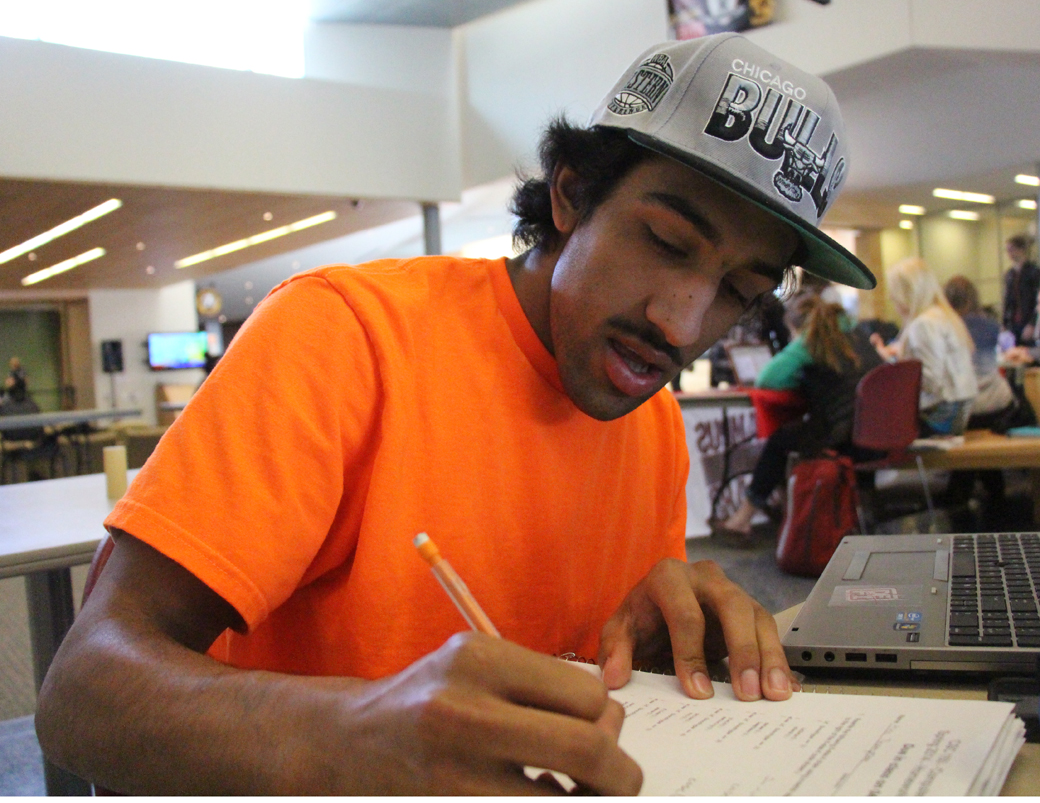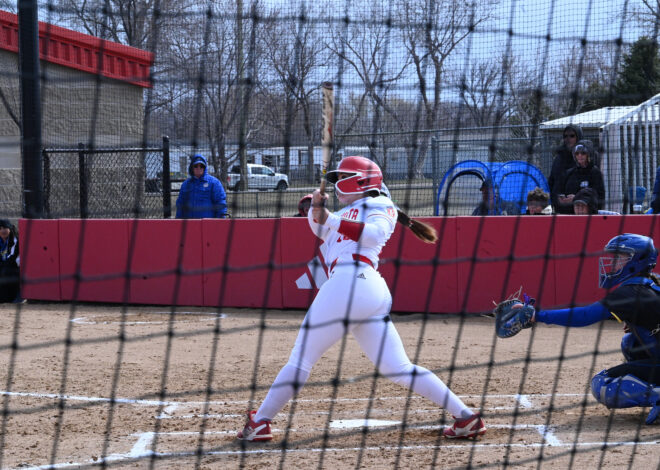
Academic probation rates declining
The number of University of South Dakota students placed on academic probation is on the decline, said Stephen Ward, director of the Academic and Career Planning Center.
BREAKOUT: According to USD’s website, “If a student’s cumulative grade point average falls below a 2.0, they will be placed on ‘Academic Probation.’ Student who are placed on probation will receive a letter from their Dean.”
Ward said a mixture of different programs and changes to university layout are influencing this trend.
“Freshmen make up the bulk of students on academic probation because it is a difficult transition coming from high school to college,” Ward said.
During the fall 2010 semester, 201 first-year students were placed on academic probation. In 2013, the total number fell by 53 students for a total of 148 students.
There were 272 USD students on academic probation in the fall 2013 semester.
According to the South Dakota Board of Regents policy, all six state universities follow this student GPA requirement.
Other restrictions for students on academic probation include restraints on courses the student can enroll in. The student may be required to retake a course. The student may also be required to take a class in career development.
Ward said if a student is suspended from the university because they did not meet the 2.0 GPA requirement, the student may go through an appeals process.
“(The student) can write a letter of appeal to the dean of their school and explain the problem,” Ward said. “The school dean may allow the student permission to return to school.”
If a student has not declared a major they are put into the College of Arts and Sciences. Ward is a member on the College of Arts and Sciences appeals board.
Ward said just because an appeal is made, it does not necessarily mean it will be granted.
“Most students are under the impression that they are guaranteed to come back. That is not the case,” Ward said.
Ward estimates about 50 percent of the students who write an appeal letter are actually allowed to return.
Ward said first-years are primarily the students on academic probation because of having to adjust to college life.
“Your educational culture is flipped upside-down when you come to college,” Ward said.
Sophomore Alexander Thompson was on academic probation his first-year at USD because he was not prepared for the rigorous coursework.
“I thought that college was going to be like high school where you don’t have to try hard to get good grades,” said Thompson.
Thompson said high school can prepare students for college, but only if they already practice good study skills.
“High school adequately prepares you for college only if you have the right attitude and are focused on your studies,” Thompson said.
In his second year of classes, Thompson is no longer on academic probation. Ward attributes Thompson’s and other students’ academic success to a variety of program additions and structural improvements.
“We have expanded first year experience seminars for freshmen students. The library being connected with the MUC encourages students to stay in one place,” Ward said
Other academic programs, like Supplemental Instruction (SI), have also contributed to the decrease of students on academic probation, Ward said.
SI is a program that provides extra help to students outside the classroom.
Students who have previously taken a course and done well in it may then apply to become a supplemental instructor. The supplemental instructor coordinates with the professor to provide additional aid to students. SI is free but is only held for select classes.
SI are for larger classes or classes that have proved to be more challenging for students.
Junior Tyler Fried was also on academic probation during his first year at USD. Like Thompson, Fried began to utilize SI after failing a few classes.
“I thought I could skate by and not do my homework,” Fried said. “I fell into old habits and it caught up with me.”
Fried said being placed on academic probation was a reality check which prompted him to make study changes.
“Parental disappointment was a good motivator in getting off of academic probation,” Fried said. “I also had a really great adviser get me back on track.”
Ward also attributes skilled advisers to the fewer number of students on academic probation.
“Advisers and faculty explaining their expectations along with Supplemental Instruction and tutoring has also helped,” he said.
Ward also attributes Starfish, a new program instituted by the university, to less students being placed on academic probation.
The program allows faculty to select options like low scores or low attendance as reason why they are sending an early alert. Starfish replaces midterm deficiency warnings because it allows the professor to give the student more feedback.
Although both Fried and Thompson have not heard of Starfish, they said new accommodations made by the university are helping them succeed academically.
Thompson attributes his ability to get off academic probation to his support system and utilizing more academic resources.
“My family helped me to get off academic probation,” Thompson said. “I use SI way more now than my freshman year.”
BREAKOUT:
| Estimated number of first-year students on probation | ||
| Fall 2010 | 201 | |
| Fall 2011 | 186 | |
| Fall 2012 | 169 | |
| Fall 2013 | 148 | |
| Estimated probation students (all students) | ||||
| Fall 2010 | 348 | |||
| Fall 2011 | 344 | |||
| Fall 2012 | 304 | |||
| Fall 2013 | 272
| |||
Photo: Sophomore Alexander Thompson works on homework in the Muenster University Center March 31. Thompson was placed on academic probation his first year at USD. (Malachi Petersen/The Volante)

